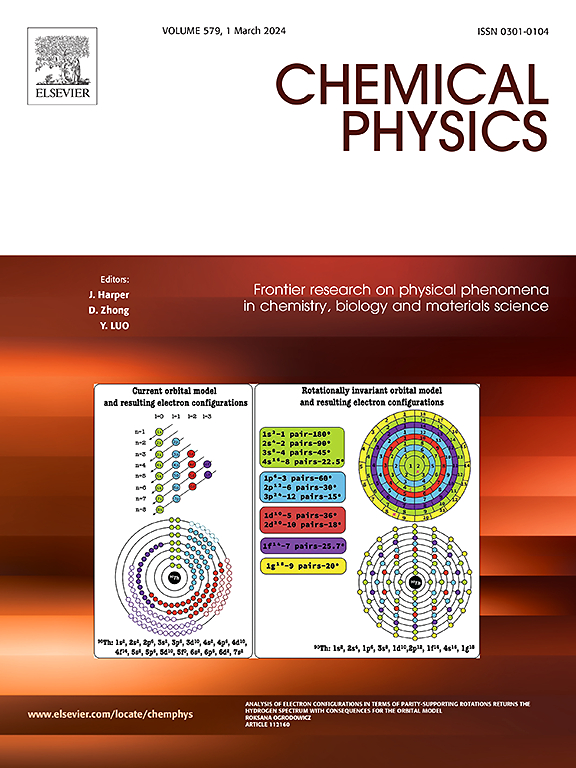First-principles calculations, into the stability, tensile strength, and physical properties of M2CuC (M = V, Cr, and Mo) as novel 211 MAX phase carbides
IF 2.4
3区 化学
Q4 CHEMISTRY, PHYSICAL
引用次数: 0
Abstract
The stability and properties of newly proposed 211 MAX phase carbides, M₂CuC (M = V, Cr, and Mo), were investigated using first-principles calculations. We assessed their thermodynamic, dynamical, and mechanical stability via formation energies, phonon dispersion analyses, and elastic constants. Electronic band structures and density of states confirm their metallic nature. We visualized their anisotropic mechanical properties—Young's modulus (E), linear compressibility (β), and shear modulus (G) within the x–z plane—using 2D and 3D representations.
Vickers hardness calculations revealed differences in ductility. Tensile strength analysis reveals directional dependence, with V₂CuC showing the highest values in both [0 0 1] (13.23 GPa, 7 %) and [110] (13.82 GPa, 20 %) directions. Cr₂CuC exhibits greater ductility in [001], while Mo₂CuC consistently shows the lowest tensile performance. Using Slack's model, we estimated room-temperature lattice thermal conductivities as 21, 19.5, and 16.7 W/m·K for Cr₂CuC, V₂CuC, and Mo₂CuC, respectively. We also explored additional thermal parameters (including Debye and melting temperatures) to evaluate their suitability for extreme environments.
通过第一性原理计算,研究了M2CuC (M = V, Cr和Mo)作为新型21max相碳化物的稳定性、抗拉强度和物理性能
用第一性原理计算研究了新提出的21max相碳化物M₂CuC (M = V, Cr, Mo)的稳定性和性能。我们通过地层能量、声子色散分析和弹性常数评估了它们的热力学、动力学和机械稳定性。电子能带结构和态密度证实了它们的金属性质。我们使用2D和3D表示可视化了它们的各向异性力学性能-杨氏模量(E),线性压缩率(β)和剪切模量(G)在x-z平面内。维氏硬度计算揭示了延展性的差异。抗拉强度分析显示出方向依赖性,V₂CuC在[0 0 1](13.23 GPa, 7%)和[110](13.82 GPa, 20%)两个方向均最高。Cr₂CuC在[001]中表现出更高的延展性,而Mo₂CuC始终表现出最低的拉伸性能。利用Slack的模型,我们估计Cr₂CuC、V₂CuC和Mo₂CuC的室温晶格导热系数分别为21、19.5和16.7 W/m·K。我们还探索了其他热参数(包括德拜温度和熔化温度),以评估它们在极端环境中的适用性。
本文章由计算机程序翻译,如有差异,请以英文原文为准。
求助全文
约1分钟内获得全文
求助全文
来源期刊

Chemical Physics
化学-物理:原子、分子和化学物理
CiteScore
4.60
自引率
4.30%
发文量
278
审稿时长
39 days
期刊介绍:
Chemical Physics publishes experimental and theoretical papers on all aspects of chemical physics. In this journal, experiments are related to theory, and in turn theoretical papers are related to present or future experiments. Subjects covered include: spectroscopy and molecular structure, interacting systems, relaxation phenomena, biological systems, materials, fundamental problems in molecular reactivity, molecular quantum theory and statistical mechanics. Computational chemistry studies of routine character are not appropriate for this journal.
 求助内容:
求助内容: 应助结果提醒方式:
应助结果提醒方式:


